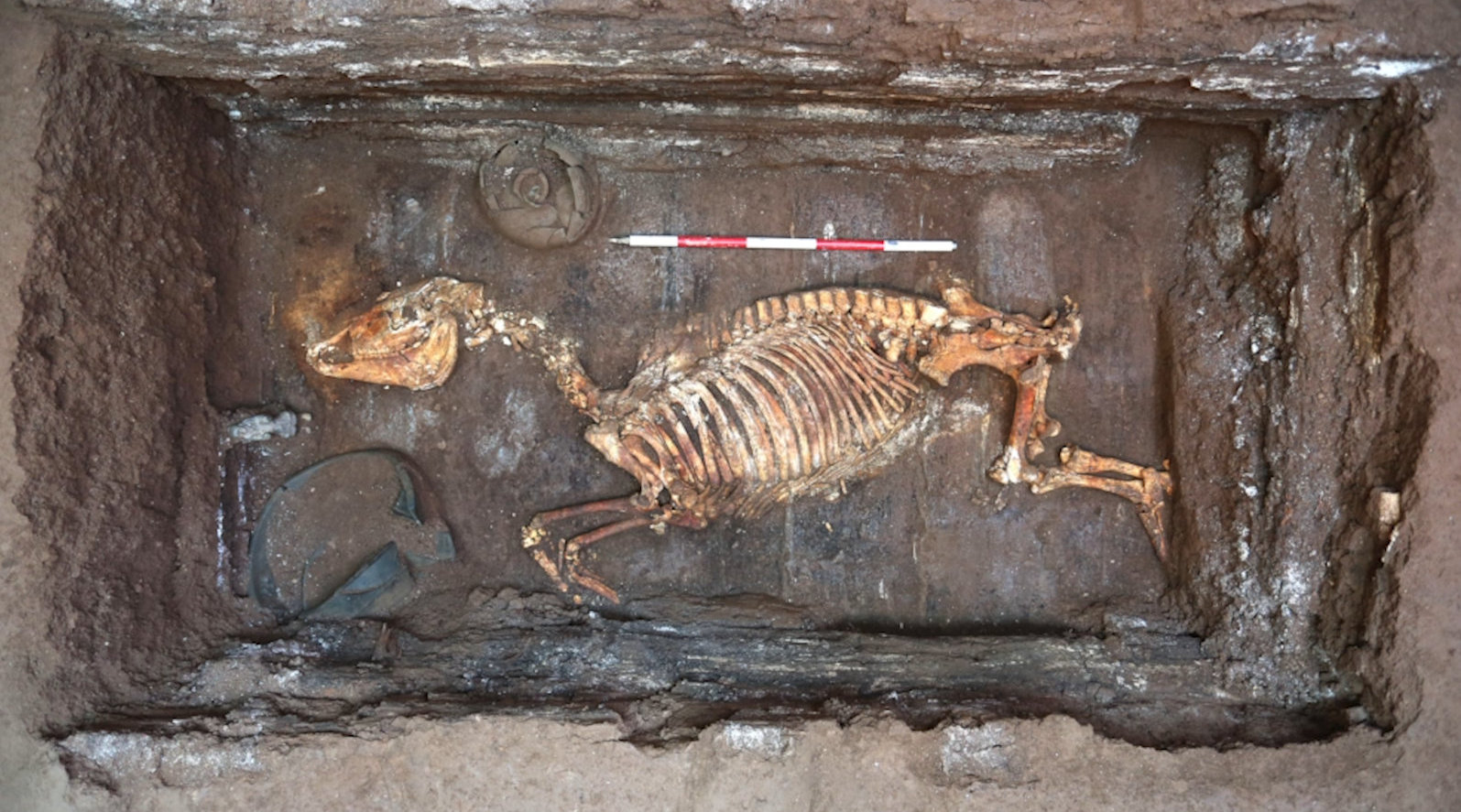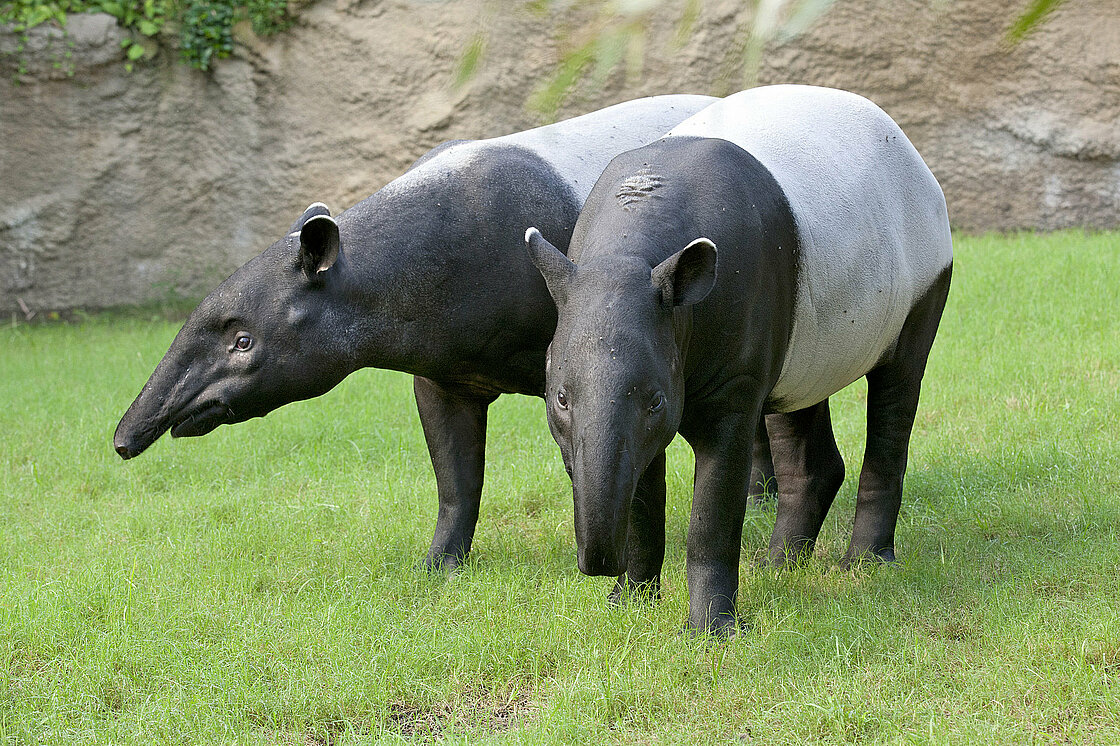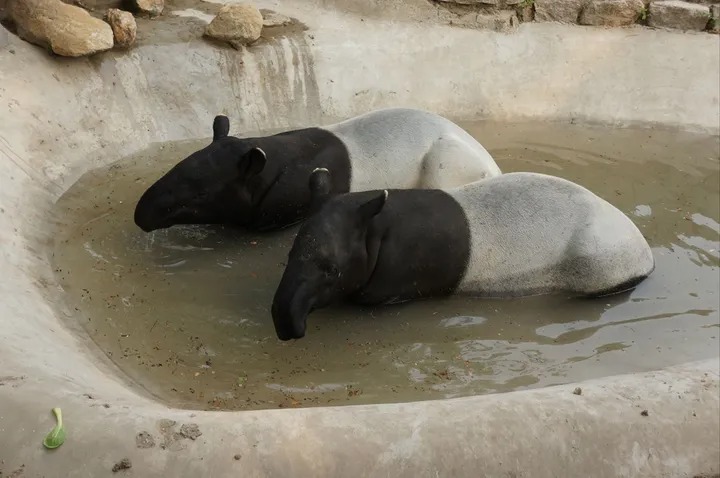At the present time, China does not have tapirs, so many scholars believe that the Chinese tapir is actually another name for the ancient giant panda, and there are also many sources of ancient records. describes that “tapirs resemble bears but are black and yellow, originating from Sichuan”. However, this claim has been broken by new discoveries in the Han Wen De Ba Lang archaeological project, because archaeologists actually found the remains of a tapir inside the sacrificial pit.
In a burial pit outside the tomb, researchers discovered some strangely shaped animal teeth, the two ends of these animal teeth were connected together like pyramids. Among all animals, only tapirs have this trait.

The mausoleum is located in Jiangcun village, an eastern suburb of Xi’an, surrounded by more than 100 ancient tombs and burial pits outside. Excavations have been carried out in the area since 2017, collecting many relics such as dressed ceramic figurines, crossbows and seals. Photo: Zhihu
In fact, as early as the 1920s, tapir remains were excavated in Yinxu, Anyang, Henan.
It is known that this discovery is also the first time a complete tapir skeleton has been discovered in China. With the tapir skeleton unearthed, it means that tapirs and giant pandas are essentially two different creatures.
The discovery of the remains of this animal has made Chinese archaeologists extremely surprised because according to previous discoveries, ancient tapirs became extinct in China more than 100,000 years ago, but the skeleton This is just over 2,000 years old.

In addition to the skeletons of giant pandas and tapirs, the research team also found remains of gaur, tiger, blue peacock, yak, golden snub-nosed monkey and wild buffalo… in the sacrificial pits. Sohu’s photo
In fact, our planet currently has a total of 5 species of tapirs, which are the Asian tapir (sometimes called the Malayan tapir), the South American tapir, the Central American tapir, and the mountain tapir. and Kabomani tapir (this is a new species discovered in 2013 but has not yet been officially recognized). Accordingly, the tapirs that have appeared in China are Asian tapirs.
This species mainly lives in tropical rain forests and swamps in Southeast Asia, its distribution range is the Malay Peninsula, Indonesia, Thailand, Myanmar and other places.
Historically, tapirs also existed in China, but due to climate change and human activities greatly impacting them, they have disappeared since the Song Dynasty. Ancient Chinese legends say that tapirs are dream eaters, they can eat people’s nightmares, and therefore in some ancient tombs, tapirs are also used as tomb guards.
Of course this is just a legend, and the tapir is just a strange-looking animal. The body of the Asian tapir is very similar to that of a pig , round and fat, with thick skin, horse-like ears, rhinoceros-like hind legs and an elephant-like nose, which can be stretched out comfortably, but it is much shorter.
The black and white fur color is the same as that of the giant panda, the front half of the body, limbs and tail are all black, the back half of the body is white. The “black yellow” color described by the ancients may be due to the fact that tapirs often roll in the mud and dye the white into opaque yellow.

The Asian tapir is the largest species of tapir , after maturity it can weigh up to 250-540 kg and have a body length of 180-250 cm. Although tapirs are large, bulky, and strange looking, they are very timid and timid creatures, have a kind personality, and rarely come into conflict with other animals. Photo: Zhihu
Asian tapirs like to be active in forested areas near water. By nature, they love water and often wallow in water or mud.
This is because the climate in Southeast Asia is hot, being in the water can cool them down, and this can also help them avoid natural enemies, tapirs can dive into the water, sticking their nose out of the water to breathe.
Although the tapir’s body looks very bulky, it is actually very agile, not only in water but also on land, it runs very fast, when running it puts its nose to the ground, like a small elephant.
Their eyesight is poor but their sense of smell and hearing are very sensitive. When foraging in the wild, they mainly rely on their sense of smell. Tapirs in reality do not eat dreams. They eat twigs, leaves and fruits of plants. They use their trunks to roll food into their mouths like elephants. Their hard teeth can bite off thick and hard tree branches. Molars are like grinding discs that can crush all kinds of plants into pieces.

Asian tapirs’ eyes are small, located on both sides of the head, and they are also afraid of strong light stimulation. Tapirs often hide in the shade to rest during the day and come out to move around in the evening. Tapirs do not have fangs and claws, nor do they have hard horns like other herbivores, so when faced with danger they will basically run away. Photo: Zhihu